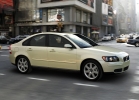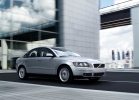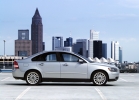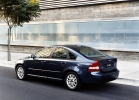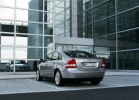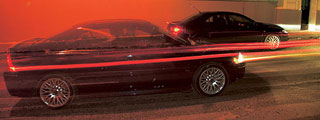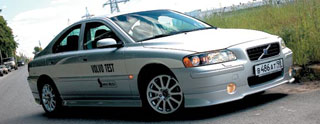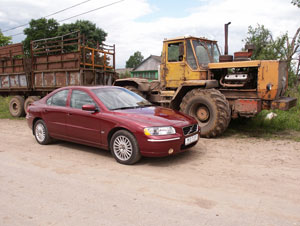Test drive Volvo S40 2004 - 2007 sedan
Volvo for the manager
Criterias of choice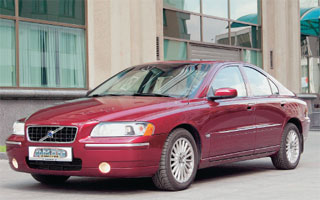 Trying the car for yourself and selecting a model, say, for middle -level managers of your company - these, as they say in Odessa, are two big differences. Suppose I personally prefer a 260-horsepower car from the S60 gamut, or even the S60R with a herd of 300 horses under the hood. But from the point of view of the leader, such a choice is pure madness. And not only because the initial price is higher and operation is much more expensive. Such a quick car to an employee, if you really appreciate it, just use it. By and large, she brings an additional risk factor to the business. And any top manager always seeks to minimize risks.
Trying the car for yourself and selecting a model, say, for middle -level managers of your company - these, as they say in Odessa, are two big differences. Suppose I personally prefer a 260-horsepower car from the S60 gamut, or even the S60R with a herd of 300 horses under the hood. But from the point of view of the leader, such a choice is pure madness. And not only because the initial price is higher and operation is much more expensive. Such a quick car to an employee, if you really appreciate it, just use it. By and large, she brings an additional risk factor to the business. And any top manager always seeks to minimize risks. Continuing to reason in the same spirit, I came to another conclusion, which, admitted, surprised me myself. The fact that, from a subjective, driver’s point of view, in the settings of a 140-horsepower S60 looks like a disadvantage, turns into undoubted advantages, if we consider this version from the point of view of a fletener. For two weeks of dough, I was quite convinced of this. But, before moving on to the privacy, I will say about the main thing. This car has sufficient power so that you can move quickly and not be late for meetings. He sets up on a calm ride and allows you not to strain, but to relax at the wheel. What else would you wish for an employee who always wait at work on time and full of strength?
Comfort and safety
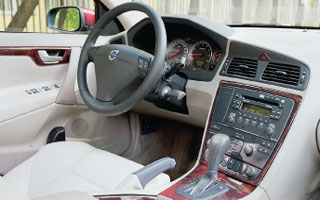 On the test I visited the S60 in a very good configuration with an automatic gearbox. The interior is finished with white skin with impeccable seams, the seats are extremely convenient, the audio system (if I am not mistaken, with thirteen speakers) sounds great, there is even a hatch in the roof. The separate climate control system for the driver and the front passenger works very efficiently, literally in a couple of minutes filling the salon with a life-giving coolness on a hot day.
On the test I visited the S60 in a very good configuration with an automatic gearbox. The interior is finished with white skin with impeccable seams, the seats are extremely convenient, the audio system (if I am not mistaken, with thirteen speakers) sounds great, there is even a hatch in the roof. The separate climate control system for the driver and the front passenger works very efficiently, literally in a couple of minutes filling the salon with a life-giving coolness on a hot day. Somehow after a busy day, I brought the most capricious editorial staff. When asked about her impression of the car, I heard an immediate answer: it doesn’t happen better! Believe me, reader, this recognition is worth a lot. And indeed: in terms of comfort, Volvo S60 will not yield, perhaps, any of the competitors in his segment. Moreover, comfortable and quite spacious not only on the front, but also on the rear seats.
Now about running qualities. The fact that the engine is economical is felt right away: in Drive mode, acceleration is even, and the sports regime and the ability to manually move from step to the step to the automatic transmission are not provided. You can, of course, spur the car, sharply drowning the accelerator pedal to the floor: the electronics will honestly drive the tachometer arrow into the red zone in each gear, and sports notes will appear in the rod of the motor. But the transition to the next step will still be rather soft, and you still will not achieve a special jerk. This does not mean that the driver is doomed to a leisurely ride - accelerate, and confidently, at least to the maximum 205 km/h. Just do not count on the fact that the car can shoot at any speed is not a supercar, it has other tasks.
In full accordance with the nature of the power plant, both pendants and steering are configured. The car is very soft, which gives a feeling of comfort on any road, but completely repels the hunt for excessively sharp restructures or to a dashing storm of turn. At the same time, on the highway, at a decent speed, the S60 behaves quite worthy. The steering wheel is unusually light, it does not require any effort, except that with very fast driving it is slightly heavy, and then some kind of feedback appears on the steering wheel. But the brakes are good: the pedal has a sufficient move and it is just so as not to make a mistake with effort.
In general, the tested version of the S60 does not configure in any way on an aggressive ride, it is contraindicated for it, like tobacco to the athlete. That is why I would add to proprietary safety (pillows, curtains, STC and DSTC) sign +. And after all, an amazing thing: I began to notice that I will go much more calmly, I am even more calm, I am even less annoyed by the teapots in the left row - even with them, I am comfortable, and I still won’t be late. Tell me, reader, what else is required of a corporate car?
Expenses
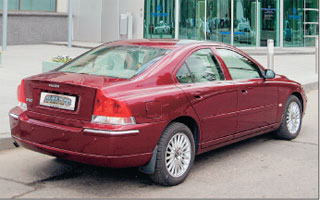 As for fuel consumption, it is really small for such a car. Of course, the consumption is more on the on -board computer than according to official figures - and this is quite normal. In Moscow, in general, you have to visit gas stations more often than in any other European capital, including even Paris (verified personally). So, the on -board computer showed the average consumption of 12.3 liters per 100 km of run. This, I ask you to take into account, in Moscow traffic jams, with a constantly working air conditioner, and, what to hide, with maximum accelerations that the car is capable of.
As for fuel consumption, it is really small for such a car. Of course, the consumption is more on the on -board computer than according to official figures - and this is quite normal. In Moscow, in general, you have to visit gas stations more often than in any other European capital, including even Paris (verified personally). So, the on -board computer showed the average consumption of 12.3 liters per 100 km of run. This, I ask you to take into account, in Moscow traffic jams, with a constantly working air conditioner, and, what to hide, with maximum accelerations that the car is capable of. Prices for this version of Volvo S60 begin at $ 30 900. I would not say that it is expensive for the premium car, you have to pay for all the good. Including service. The frequency of passage is 15,000 km. The first visit to the service station will require $ 270. The second is 900, the third - again 270, and the fourth, with a mileage of 60,000 km, $ 1100. Of course, taking into account the cost of all consumables, including filters and candles. In general, the norm is rated at $ 60 for dealers of the brand. If we talk about the cost of spare parts, then, for example, the front brake pads will cost 3768 rubles, the rear in 2885. The air filter costs 1205 rubles, and the fuel - 1876.
One thing should be taken into account: corporate customers can count on discounts when buying a car, as well as discounts with service, repair and purchase spare parts. In addition, it is hardly a car of a similar class of, say, German production, will require lower costs.
Oleg Osipov
A source: The newspaper "Automobile Izvestia" No. 11 (79), 06/05.
Video Crash tests Volvo S40 2004 - 2007
Test drives Volvo S40 2004 - 2007
Krash -test Volvo S40 2004 - 2007
Krassh Test: Detailed Information34%
Driver and passengers
18%
Pedestrians
40%
Children-passengers

